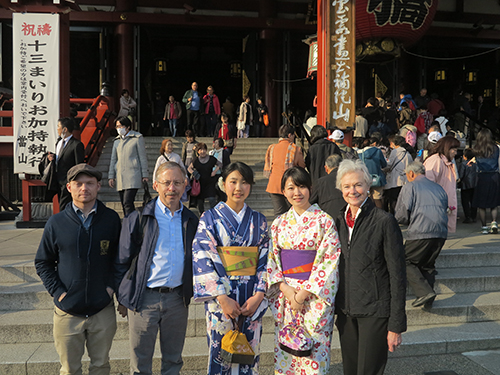4/12/2017
By Jason Nesbitt, Assistant Professor of Anthropology

During the recent spring break, Elizabeth Boone (Art), John Verano, Tatsuya Murakami, and I (Anthropology) visited Japan as part of an academic exchange with Yamagata University. Our visit was supported by a grant from the Japanese Society for the Promotion of Science awarded to Professor Masato Sakai of Yamagata University. Thanks to the efforts of Sakai, Yamagata University has become a leading center for the study of Peruvian archaeology. Sakai currently directs a large, well-funded project dedicated to the study of the famous Nazca Lines. Yamagata University currently boasts a major research institute in Nazca, Peru, and produces a peer-reviewed journal titled Peruvian Archaeology. Our invitation to present our research was part of a larger mandate to promote international collaboration.
The Tulane delegation’s first part of the trip took place in Yamagata where we delivered a series of public lectures on topics ranging from human sacrifice in ancient Peru to Aztec painted histories. During our time in Yamagata, our hosts took us on trips to an early Buddhist temple, a sake distillery, and to explore the beautiful islands of Matsushima. In addition, we were interviewed by a local television channel that is producing a documentary about Sakai’s project in Nazca.
Following our time in Yamagata we took the bullet train to Tokyo to participate in an academic symposium on the Pre-Columbian Americas. This event was attended by students and faculty from Yamagata University, the University of Tokyo, and the National Museum of Ethnology. The conference sessions were spirited and it was apparent that scholars from all institutions benefited greatly from the ensuing discussions. In the concluding remarks of the Tokyo symposium, Sakai remarked on the close collaborative ties that exist between Yamagata University and Tulane. For instance, Sakai recently spent three months at Tulane as part of a year-long sabbatical. Furthermore, I have worked for several years with other archaeologists from Yamagata on a long-term archaeological project in the southern highlands Peru. Based on the success of our visit and these other scholarly interactions, I anticipate that this cooperation will continue well into the future.

